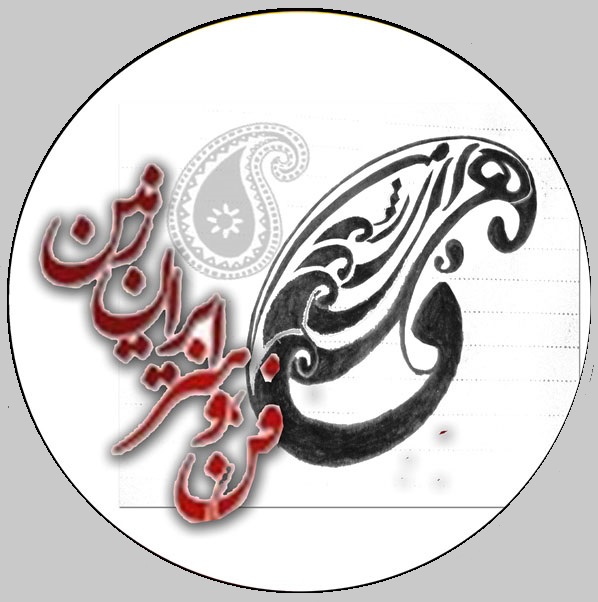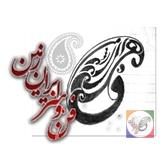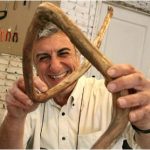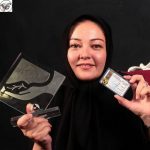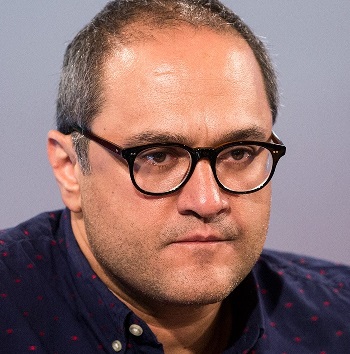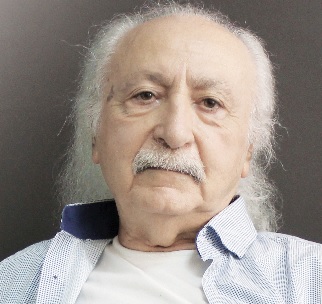Islamic geometric patterns
طرح های هندسی اسلامی
موشکاف یا مفرظی (Muqarnas) یکی از عناصر تزئینی معماری اسلامی است که در سقفها، دیوارها و منافذ ارتفاعی در برجهای ایرانی، خاورمیانهای و نواحی مدیترانه استفاده میشود. این عنصر تزئینی از معماری رومی، یونانی و ساسانی الهام گرفته و به هندسه و ساختار داخلی یا خارجی منطقه نسبت داده شده است. مفرظیها عموما از چوب، سنگ، آجر یا سفال ساخته میشود و شامل شکلهای هندسی مختلفی مانند مستطیل، مربع، صدف، خلاء، ارتفاع، غایب و … هستند. این عناصر تزئینی به عنوان نمادی از بلندمرتبهترین فرایندهای روحی و بصری از دیدگاه اسلامی در هنر معماری مطرح است.

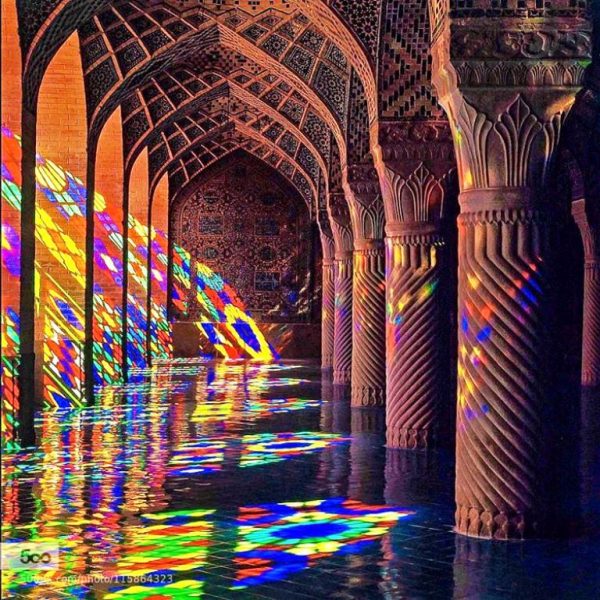
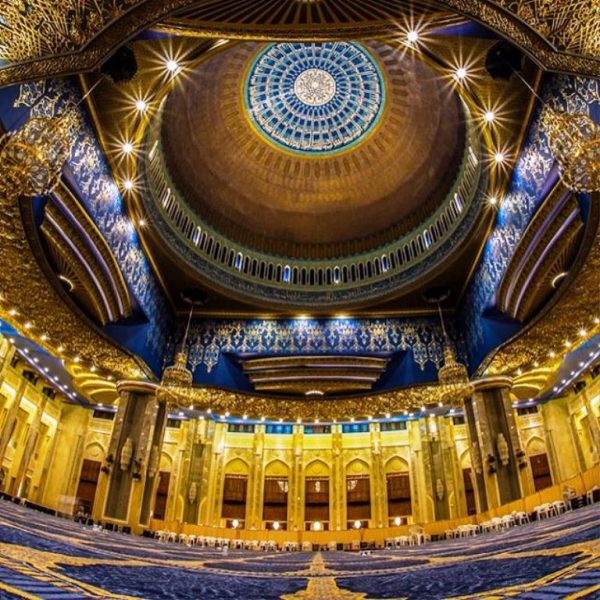

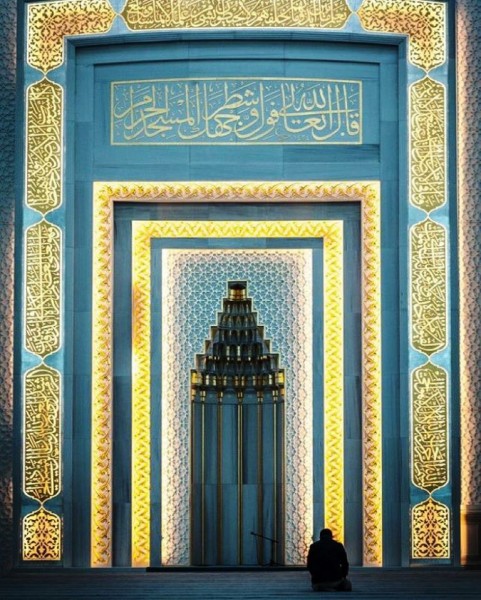

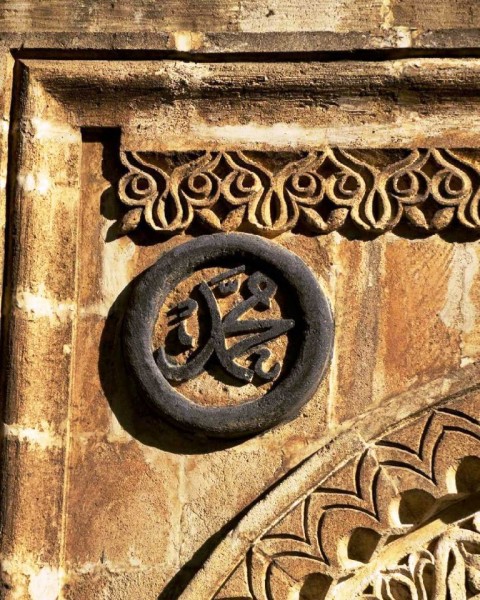
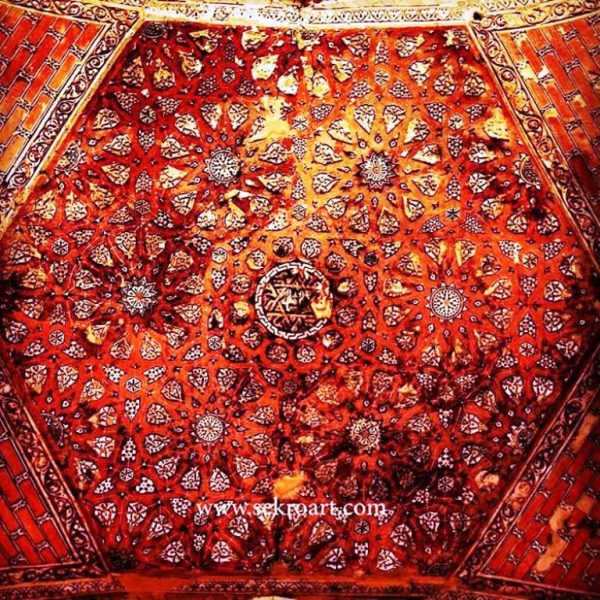
|
Islamic geometric patterns From Wikipedia, the free encyclopedia Tiles in the Alhambra Bou Inania Madrasa, Fes, Morocco, originally c. 1350 (tilework later) Detail of bronze door, Mosque-Madrassa of Sultan Hassan, Cairo A variety of vernacular decorative Islamic styles in Morocco Arch in the Alhambra
Islamic decoration makes great use of geometric patterns which have developed over the centuries. Many of these derived from various earlier cultures: Greek, Roman, Byzantine, Central Asian, and Persian.[citation needed] They are usually distinguished from the arabesque, the term for decoration in Islamic art based on curving and branching vegetal forms. But sometimes foliage and linear geometric patterns are combined in a single design, and some purely abstract linear patterns adopt designs that seem clearly derived from vegetal arabesque ones. The geometric designs have evolved into beautiful and highly complex patterns, still used in many modern day settings
The square and rectangle play a significant role in Islamic architecture. Some of the reason for this is façades built from rectangular bricks. This ornamental brickwork casts shadows in the strong desert sunlight and creates a three-dimensional effect. A recurring motif is a small central square turned 45 degrees within a larger square. Another source for the square motif is woven baskets.
The Persianate world is the main area with buildings with decorative brickwork, especially during the Seljuk period; the Great Mosque of Cordoba is another example further west. The eight-pointed star is another common motif in Islamic architecture, often found in tile-work and other media. Star patterns are extremely complex when the outer points are joined together and other intersections connect in a systematic way, as in girih tilework. The Alhambra palace in Granada, Spain is a famous example of repeating motifs which occur in the tile and stucco decoration. Octagons appear in Islamic architecture in various shapes. They frequently occur in marble floors. The Citadel of Aleppo in Syria contains marble opus sectile floors, which utilize the square and the eight-pointed star. Pierced screens (jali in India) are another common location for geometric decoration. Significance in Islam The arabesques and geometric patterns of Islamic art are often said to arise from the Islamic view of the world. To Muslims, these forms, taken together, constitute an infinite pattern that extends beyond the visible material world. To many in the Islamic world, they concretely symbolize the infinite, and therefore uncentralized, nature of the creation of Allah and convey a spirituality without the figurative iconography of the art of other religions.
Mistakes in repetitions may be intentionally introduced as a show of humility by artists who believe only Allah can produce perfection, although this theory is disputed.Repeating geometric forms are often accompanied by calligraphy. Ettinghausen et al. describe the arabesque as a “vegetal design consisting of full…and half palmettes [as] an unending continuous pattern…in which each leaf grows out of the tip of another.” To the adherents of Islam, the continuous patterns are symbolic of their united faith and the way in which traditional Islamic cultures view the world.
There are two modes to Islamic decoration. The first recalls the principles that govern the order of the world. These principles include the bare basics of what makes objects structurally sound and, by extension, beautiful (i.e. the angle and the fixed/static shapes that it creates—esp. the truss). In the first mode, each repeating geometric form has a built-in symbolism ascribed to it. For example, the square, with its four equilateral sides, is symbolic of the equally important elements of nature: earth, air, fire and water. Without any one of the four, the physical world, represented by a circle that inscribes the square, would collapse upon itself and cease to exist. The second mode is based upon the flowing nature of plant forms. This mode recalls the feminine nature of life giving. In addition, upon inspection of the many examples of Arabesque art, some would argue that there is in fact a third mode, the mode of Arabic calligraphy.
Instead of recalling something related to the ‘True Reality’ (the reality of the spiritual world), for the Muslim calligraphy is a visible expression of the highest art of all; the art of the spoken word (the transmittal of thoughts and of history). In Islam, the most important document to be transmitted orally is, of course, the Qur’an. Proverbs and complete passages from the Qur’an can be seen. The coming together of these three forms creates the totality of Islamic decoration, and this is a reflection of unity arising from diversity (a basic tenet of Islam).
The geometric patterns can also be equally thought of as both art and science, some say. The art is at the same time mathematically precise, aesthetically pleasing, and symbolic. So due to this duality of creation, they say, the artistic part of this equation can be further subdivided into both secular and religious artwork. However, for many Muslims there is no distinction; all forms of art, the natural world, mathematics and science are all creations of God and therefore are reflections of the same thing – that is, God’s will expressed through His Creation. In other words, man can discover the geometric forms that constitute the design, but these forms always existed before as part of God’s creation, as shown in this picture.
There is great similarity between artwork from very different geographic regions. In fact, the similarities are so pronounced, that it is sometimes difficult for experts to tell where a given piece comes from. The reason for this is the rapid communication of new styles within the Islamic world, especially in the early period, and that the science and mathematics that are used to construct geometric art are universal. Therefore, for most Muslims, the best art that can be created by man for use in the Mosque is art that displays the underlying order and unity of nature. The order and unity of the material world, they believe, is a mere ghostly approximation of the spiritual world, which for many Muslims is the place where the only true reality exists. Discovered geometric forms, therefore, exemplify this perfect reality because God’s creation has been obscured by the sins of man.
| کاشی در الحمرا
بو Inania مدرسه، فاس، مراکش، در اصل ج 1350 (tile work) جزئیات درب برنز، مسجد سلطان حسن، قاهره انواع سبک اسلامی تزئینی بومی در مراکش طاق در الحمرا دکوراسیون اسلامی سازد استفاده زیادی از الگوهای هندسی که در طول قرن ها توسعه یافته است. بسیاری از این دست آمده از فرهنگ های مختلف پیش از: یونانی، رومی، بیزانسی، آسیای مرکزی و فارسی [نیازمند منبع] آنها معمولا متمایز از اسلیمی هستند، اصطلاح برای دکوراسیون در هنر اسلامی بر اساس کرنش و شاخه شاخه اشکال گیاهی. اما گاهی اوقات شاخ و برگ و الگوهای خطی هندسی در قالب طرح واحد ترکیب، و برخی از الگوهای خطی صرفا انتزاعی اتخاذ طرح های که به نظر می رسد به وضوح از آنهایی که اسلیمی گیاهی مشتق شده است. طرحهای هندسی را به زیبا و بسیار پیچیده الگوهای، هنوز هم در بسیاری از تنظیمات مدرن و روز مورد استفاده قرار تکامل یافته است.
مربع و مستطیل نقش مهمی در معماری اسلامی را بازی کند. برخی از دلیل این امر نما از آجر مستطیل شکل ساخته شده است. این کوره پزخانه زینتی سایه در نور آفتاب کویر قوی و یک اثر سه بعدی ایجاد می کند. موتیف تکرار است یک مربع کوچک مرکزی 45 درجه در یک مربع بزرگتر تبدیل شده است. منبع دیگری برای موتیف مربع سبد بافته شده است.
جهان ایرانی منطقه اصلی با ساختمان های با کوره پزخانه های تزئینی به خصوص در طول دوره سلجوقی است،. مسجد بزرگ قرطبه یکی دیگر از نمونه غرب بیشتر است. ستاره هشت پر یکی دیگر از موتیف مشترک در معماری اسلامی، اغلب در کاشی کاری و دیگر رسانه های پیدا شده است. الگوهای ستاره بسیار پیچیده زمانی که نقاط بیرونی به هم پیوسته و دیگر تقاطع ها در یک روش سیستماتیک اتصال، به عنوان در tilework girih. کاخ الحمرا در گرانادا، اسپانیا یک مثال معروف از تکرار موتیف که در کاشی و گچ دکوراسیون رخ می دهد است. Octagons در معماری اسلامی در اشکال مختلف ظاهر می شود. آنها اغلب در کف سنگ مرمر رخ می دهد. ارگ حلب در سوریه شامل سنگ مرمر اپوس طبقه sectile، است که استفاده از مربع و ستاره هشت پر. صفحه نمایش سوراخ (jali در هند) یکی دیگر از محل مشترک برای دکوراسیون هندسی. اهمیت در اسلام
اشتباهات در تکرار ممکن است عمدا به عنوان یک نمایش فروتنی توسط هنرمندان که بر این باورند فقط خدا می تواند کمال تولید معرفی، اگر چه این نظریه disputed.Repeating اشکال هندسی اغلب توسط خوشنویسی همراه است. Ettinghausen و همکاران توصیف اسلیمی به عنوان یک “طراحی گیاهی متشکل از کامل … و palmettes نیمه [به عنوان] یک الگوی بی پایان مداوم … که در آن هر برگ از نوک یکی دیگر از رشد می کند.”
به پیروان اسلام، الگوهای مستمر نمادین از ایمان متحده و روشی که در آن فرهنگ سنتی اسلامی مشاهده در جهان هستند.
دو حالت به دکوراسیون اسلامی وجود دارد. به یاد می آورد اولین اصول حاکم بر نظم جهان. این اصول شامل اصول اولیه لخت از آنچه می سازد اشیاء ساختاری صدا و، با گسترش، زیبا (یعنی زاویه و ثابت / اشکال ثابت است که آن را ایجاد، ESP. خرپا). در حالت اول، هر هندسی تکرار ساخته شده است در نمادگرایی منسوب به آن است. زمین، هوا، آتش و آب: به عنوان مثال، مربع، با چهار طرف دو پهلو برابر آن، نمادی از عناصر به همان اندازه مهم از طبیعت است. بدون هیچ یکی از چهار، جهان فیزیکی، ارائه شده توسط یک دایره است که حک مربع، که بر خود سقوط و بس را به وجود. حالت دوم است بر ماهیت جریان از اشکال گیاهی است. این حالت به یاد می آورد طبیعت زنانه دادن زندگی است. علاوه بر این، پس از بازرسی از نمونه های بسیاری از هنر اسلیمی، برخی استدلال می کنند این است که در واقع یک حالت سوم، حالت خوشنویسی عربی وجود دارد.
به جای یادآوری چیزی مربوط به “واقعیت” (واقعیت جهان معنوی)، برای خوشنویسی مسلمانان بیان قابل مشاهده از بالاترین هنر است. هنر از کلمه صحبت (به انتقال افکار و تاریخ). در اسلام، مهم ترین سند منتقل می شود به صورت خوراکی است، البته، قرآن است. ضرب المثل ها و معابر کامل از قرآن دیده می شود. گرد هم آمدن این سه شکل ایجاد کلیت دکوراسیون اسلامی، و این بازتابی از وحدت ناشی از تنوع (یک اصل اساسی اسلام) است.
الگوهای هندسی نیز می تواند به همان اندازه به عنوان هر دو هنر و علم فکر، برخی می گویند. هنر است که در همان زمان ریاضی دقیق، زیبا و دل انگیز و نمادین است. بنابراین با توجه به این دوگانگی ایجاد، آنها می گویند، بخش هنری این معادله را می توان به هر دو آثار هنری سکولار و مذهبی تقسیم می شوند. با این حال، برای بسیاری از مسلمانان هیچ تمایز وجود دارد. همه اشکال هنر، جهان طبیعی، ریاضیات و علوم تمام مخلوقات خداوند هستند و در نتیجه بازتاب از همان چیزی هستند – است که، اراده خدا از طریق او ایجاد بیان شده است. به عبارت دیگر، انسان می تواند به اشکال هندسی را تشکیل میدهند که طراحی کشف، اما این اشکال همیشه قبل از به عنوان بخشی از خلقت خدا وجود داشته است، که در این تصویر نشان داده شده.
است شباهت زیادی میان آثار هنری از مناطق جغرافیایی بسیار متفاوت است. در واقع، شباهتها تا تلفظ، که گاهی اوقات دشوار است برای کارشناسان را به بگویید که در آن یک قطعه داده می آید. دلیل این ارتباط سریع از سبک های جدید در جهان اسلام است، به خصوص در اوایل دوره، و این که علم و ریاضیات استفاده می شود که برای ساخت هنر هندسی جهانی هستند. بنابراین، برای بسیاری از مسلمانان، بهترین هنر است که می تواند توسط انسان برای استفاده در مسجد ایجاد هنر است که نمایش نظم و وحدت طبیعت زمینه ای است. نظم و وحدت جهان مادی، آنها باور دارند، یک تقریب شبح مانند صرف از جهان معنوی، که برای بسیاری از مسلمانان مکانی که در آن تنها واقعیت وجود دارد است. اشکال هندسی را کشف کرد، بنابراین، نمونه این واقعیت کامل است، زیرا خلقت خدا شده است از گناهان انسان پنهان شده است.
|
با تشکر از توجه شما : گروه فن و هنر ایران زمین
| ریاضیات اسلامی
نوشتار اصلی: ریاضیات در اسلام در قرون وسطی
در عصر طلایی اسلام، متون کهن در ریاضیات یونانی و هلنی و همچنین ریاضیات هند به زبان عربی در خانه حکمت، یک موسسه تحقیقات دانشگاهی در بغداد ترجمه شد. آثار قدما مانند افلاطون، اقلیدس، آریابهاتا و براهماگوپتا به طور گسترده ای در میان سواد و بیشتر پیشرفته به منظور حل مسائل ریاضی است که به وجود آمد با توجه به الزامات اسلامی تعیین قبله و زمان نماز و ماه رمضان خوانده شد.
ایده های افلاطون در مورد وجود یک واقعیت جداگانه است که کامل در فرم و عملکرد و بلورین در شخصیت بود، هندسه اقلیدسی به عنوان توسط عباس بن سعید الجوهری (حدود 800-860) در تفسیر خود تشریح در عناصر اقلیدس، در مثلثات از آریابهاتا و براهماگوپتا عنوان در توسط ریاضیدان فارسی به تفصیل شرح خوارزمی (حدود 780-850)، و توسعه هندسه کروی توسط ابو وفا AL-Būzjānī (940-998) و مثلثات کروی توسط Al-Jayyani (989 -1079) [6] برای تعیین قبله و زمان نماز و ماه رمضان،
همه به عنوان یک انگیزه برای الگوهای هندسی در هنر اسلامی خدمت کرده است.
همچنین ببینید Girih ( گرهچینی ) ریاضیات و هنر مقرنس توپکاپی رفته Zellige یادداشت
پرش به بالا ^ تامپسون، محمد؛ بیگم، نسیمه. “هنر اسلامی نساجی: ناهنجاری در گلیم”. سالن DU TAPIS D’شرق. TurkoTek. برگرفته 2009 اوت 25. پرش به بالا ^ Alexenberg، ملوین L. (2006). آینده از هنر در عصر دیجیتال: از هلنی به آگاهی عبری. عقل. P. 55. ISBN 1-84150-136-0. پرش به بالا ^ Backhouse، تیم. «فقط خدا کامل است”. هنر اسلامی و هندسی. برگرفته 2009 اوت 25.
پرش به بالا Ettinghausen، ریچارد؛ گرابار، اولگ. جنکینز-مدینه، مرلین (2001). هنر و معماری اسلامی، 650-1250. انتشارات دانشگاه ییل. P. 66. پرش به: ب ج Gingerich، اوون (آوریل 1986). “نجوم اسلامی”. علمی آمریکا 254 (10): 74. DOI: 10.1038 / scientificamerican0486-74. برگرفته 2008-05-18. پرش به بالا اوکانر، جان J .؛ رابرتسون، ادموند F.، «ابو عبد الله محمد بن Muadh آل Jayyani”، MacTutor تاریخچه بایگانی ریاضیات، دانشگاه سنت اندروز.
پیوند به بیرون ویکیانبار است رسانه مربوط به الگوهای هندسی اسلامی است. درست است، رابرت، الگوهای هندسی از هنر اسلامی و معماری، 1998.
مطالعه بیشتر Broug، اریک، الگوهای هندسی اسلامی، لندن: تیمز و هادسن، 2008. ISBN 9780500287217 Broug، اریک، طرح هندسی اسلامی، لندن: تیمز و هادسن، 2013. ISBN 9780500516959 Carboni، S. & Masuya، T. (1993). کاشی فارسی. نیویورک: موزه هنر متروپولیتن. لینک های خارجی در | عنوان = (کمک) Critchlow، کیت، و الگوهای اسلامی: یک رویکرد تحلیلی و کیهانی، لندن: تیمز و هادسن، 1976. ISBN 0500270716 یحیی عبداللهی، محمد رشید بن Embi (2013). تکامل طرح های هندسی اسلامی است. مرزهای پژوهش معماری: الزویر. لینک های خارجی در | عنوان = (کمک)
V T E ریاضیات و هنر تشکیل می دهد
هنر الگوریتمی هنر آنامورفیک هنر کامپیوتر هنر 4D هنر فراکتال هندسی اسلامی (Girih، Zellige) پیچیدگی معماری موسیقی اوریگامی پارچه رشته کاشی کاری هنر مجسمه سازی کلمه فیبوناچی: جزئیات آثار هنری توسط ساموئل Monnier، 2009 آثار هنری
فهرست آثار با نسبت طلایی پیوسته Octacube پی پی در آسمان طراحی شده هنرمندان
ویلیام بلیک (باستان از روز، نیوتن) لئوناردو داوینچی (ویتورین مرد) سالوادور دالی (مصلوب شدن، دم پرستو) دلا جورجیو د Chirico پیرو فرانسیسکا اریک Demaine اسکات Draves آلبرشت دورر جان ارنست MC Escher به (دایره محدود III، گالری چاپ، نسبیت، خزندگان، آبشار) Helaman فرگوسن پیتر Forakis بتشبع گراسمن جورج دبلیو هارت دزموند پل هنری جان A. Hiigli آنتونی هیل چارلز جنکس (باغ از حدس و گمان کیهانی) رابرت Longhurst رنه Magritte (لا شرایط humaine) ایستوان Orosz من ری حمید نادری یگانه ( یک پرنده در پرواز، قایق) تونی Robbin الیور گناه هیروشی Sugimoto Daina Taimina پائولو Uccello
انتشارات مجله ریاضیات و هنر سازمان های ARS ریاضیات پلهای سازمان جامعه اروپا برای ریاضیات و هنر موزه Goudreau ریاضی در هنر و موسسه علوم برای بدانند
مفاهیم فراکتال نسبت طلایی چشم انداز فرافکنی نسبت هندسه (معماری، انسانی) گروه تقارن موزاییک کاری پس زمینه نظریه پردازان Polykleitos (کانن) ویتروویوس (architectura د) لوکا Pacioli (د proportione DIVINA) پیرو دلا Francesca (د Prospectiva Pingendi) لئون باتیستا آلبرتی (د pictura) آلبرشت دورر (نسبت VIER بوچر فون Menschlicher) غلامرضا هاردی (عذرخواهی یک ریاضیدان است) جورج Birkhoff ( اندازه گیری زیبایی) داگلاس هافستادر (گودل، اشر، باخ) نیکوس Salingaros (این «زندگی»، یک فرش)
مطالب مرتبط اثر دروست زیبایی ریاضی هندسه مقدس دسته بندی ها: ریاضیات artIslamic اسلامی | Islamic Mathematics
Main article: Mathematics in medieval Islam
During the golden age of Islam, ancient texts on Greek and Hellenistic mathematics as well as Indian mathematics were translated into Arabic at the House of Wisdom, an academic research institution in Baghdad. The works of ancient scholars such as Plato, Euclid, Aryabhata and Brahmagupta were widely read among the literate and further advanced in order to solve mathematical problems which arose due to the Islamic requirements of determining the Qibla and times of salat and Ramadan.
Plato’s ideas about the existence of a separate reality that was perfect in form and function and crystalline in character, Euclidean geometry as expounded on by Al-Abbās ibn Said al-Jawharī (ca. 800-860) in his Commentary on Euclid’s Elements, the trigonometry of Aryabhata and Brahmagupta as elaborated on by the Persian mathematician Khwārizmī (ca. 780-850), and the development of spherical geometry by Abū al-Wafā’ al-Būzjānī (940–998) and spherical trigonometry by Al-Jayyani (989-1079)[6] for determining the Qibla and times of salat and Ramadan,
all served as an impetus for geometric patterns in Islamic art.
See also Girih Mathematics and art Muqarnas Topkapı Scroll Zellige Notes
Jump up ^ Thompson, Muhammad; Begum, Nasima. “Islamic Textile Art: Anomalies in Kilims”. Salon du Tapis d’Orient. TurkoTek. Retrieved 25 August 2009. Jump up ^ Alexenberg, Melvin L. (2006). The future of art in a digital age: from Hellenistic to Hebraic consciousness. Intellect. p. 55. ISBN 1-84150-136-0. Jump up ^ Backhouse, Tim. “Only God is Perfect”. Islamic and Geometric Art. Retrieved 25 August 2009.
Jump up Ettinghausen, Richard; Grabar, Oleg; Jenkins-Madina, Marilyn (2001). Islamic Art and Architecture, 650-1250. Yale University Press. p. 66. Jump up to: a b c Gingerich, Owen (April 1986). “Islamic astronomy”. Scientific American 254 (10): 74. doi:10.1038/scientificamerican0486-74. Retrieved 2008-05-18. Jump up O’Connor, John J.; Robertson, Edmund F., “Abu Abd Allah Muhammad ibn Muadh Al-Jayyani”, MacTutor History of Mathematics archive, University of St Andrews. References Wikimedia Commons has media related to Islamic geometric patterns. Field, Robert, Geometric Patterns from Islamic Art & Architecture, 1998.
Further reading Broug, Eric, Islamic Geometric Patterns, London : Thames and Hudson, 2008. ISBN 9780500287217 Broug, Eric, Islamic Geometric Design, London : Thames and Hudson, 2013. ISBN 9780500516959 Carboni, S. & Masuya, T. (1993). Persian tiles. New York: The Metropolitan Museum of Art. External link in |title= (help) Critchlow, Keith, Islamic Patterns : an analytical and cosmological approach, London : Thames and Hudson, 1976. ISBN 0500270716 Yahya Abdullahi, Mohamed Rashid Bin Embi (2013). Evolution of Islamic geometric patterns. Frontiers of Architectural Research: Elsevier. External link in |title= (help)
v t e Mathematics and art Forms
Algorithmic art Anamorphic art Computer art 4D art Fractal art Islamic geometric patterns (Girih, Zellige) Knotting Architecture Music Origami Textiles String art Sculpture Tiling Fibonacci word: detail of artwork by Samuel Monnier, 2009 Artworks
List of works designed with the golden ratio Continuum Octacube Pi Pi in the Sky Artists
William Blake (The Ancient of Days, Newton) Leonardo da Vinci (Vitruvian Man) Salvador Dalí (Crucifixion, The Swallow’s Tail) Giorgio de Chirico Piero della Francesca Erik Demaine Scott Draves Albrecht Dürer John Ernest M. C. Escher (Circle Limit III, Print Gallery, Relativity, Reptiles, Waterfall) Helaman Ferguson Peter Forakis Bathsheba Grossman George W. Hart Desmond Paul Henry John A. Hiigli Anthony Hill Charles Jencks (Garden of Cosmic Speculation) Robert Longhurst René Magritte (La condition humaine) István Orosz Man Ray Hamid Naderi Yeganeh (A Bird in Flight, Boat) Tony Robbin Oliver Sin Hiroshi Sugimoto Daina Taimina Paolo Uccello
Publications Journal of Mathematics and the Arts Organizations Ars Mathematica The Bridges Organization European Society for Mathematics and the Arts Goudreau Museum of Mathematics in Art and Science Institute For Figuring Concepts Fractal Golden ratio Perspective Projective geometry Proportion (Architecture, Human) Symmetry Tessellation Wallpaper group Theorists Polykleitos (Canon) Vitruvius (De architectura) Luca Pacioli (De divina proportione) Piero della Francesca (De Prospectiva Pingendi) Leone Battista Alberti (De pictura) Albrecht Dürer (Vier Bücher von Menschlicher Proportion) G. H. Hardy (A Mathematician’s Apology) George Birkhoff (Aesthetic Measure) Douglas Hofstadter (Gödel, Escher, Bach) Nikos Salingaros (The ‘Life’ of a Carpet) Related topics
Droste effect Mathematical beauty Sacred geometry
Categories: Islamic artIslamic mathematics |
ویکیپدیا، دانشنامه آزاد
